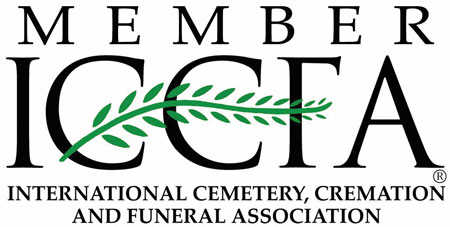Service Details And Cultural Traditions
‘Through the Resurrection of Christ, and the promised resurrection of all the departed, death is not viewed as an ending, but as a time of repose — a time to rest from the struggles and temptations of our fallen world. Death, then, is understood by the Orthodox as a “dormition”, a time of sleeping. Indeed, the very word “cemetery” comes from a Greek term meaning “a place to sleep.” At the funeral service, two things are understood to happen. First, the Saints teach us that our prayers for the departed bring him/her great comfort and joy. Second, through prayers, hymns and music, those who are left behind have a medium through which to express their grief and articulate their faith in everlasting life through Christ Jesus. The funeral ends by the Faithful taking the departed to rest, looking forward to the day when the Lord will wake him/her up from his/her repose.’ www.uocc.com
Notes from Father Chad Pawlyshyn
Orthodox Funeral Rite & Beliefs
In the Orthodox Church cremation if not allowed; should this be the wish of the person or family before anything is planned you need to speak to the priest, and he will instruct on what services can be provided.
Open Casket: There are various things that are done during the service such as the blessing of the body with holy water, absolution prayer is placed in the hand of the departed and the “last kiss” when the faithful are departing the church. Because of these things a closed casket does not make it possible and takes away from the beliefs and traditions of the Orthodox Church.
The Funeral for a Layperson normally will consist of two services; the first being the “Panakhyda, Litia, Parastas.” This is a short service that is done the night before the funeral service and can be served in the funeral chapel or in the church. At the end of the service those who are in attendance would be invited to give the “last kiss” and say their goodbyes to the person.
The Funeral service on the day the burial. Once the departed is in the church with the feet towards the front of the church and the head towards the back. Also, the casket is to be open for the entire service. This service is about an hour in length and has a few parts to it. If the Panakhyda is not served in the Church the night before the priest will go out to the entry of the church and greet the person and have a reading of the Gospel. Following the reading the priest will lead everyone into the church for the services.
- During the service there will be many hymns sung, censing, Epistle and Gospel reading, blessing the departed person with holy water, and sermon.
- There is also a braided bread called “Kolachi” which if possible is a stack of three breads with fruit around the base and a candle in the top. This bread is made in the form of a circle which symbolizes eternity; and the candle reminds us that Christ is the light of the world. This may be different depending on the ethnic traditions within the Orthodox Church.
- Then we have the “Last Kiss.” This is that time when all who are in attendance come up and say their final farewell to the mortal remains of the departed.
- The final part is the leaving of the church, the priest will lead the procession out of the church and at the entrance of the church he will do a reading for the Gospel. At the conclusion of the reading the priest would then continue the procession to the coach, and then all would go to the cemetery for the interment.
The Interment is a short service at the cemetery.
- First there would be a procession from the coach to the gravesite lead by the priest. Once the the newly departed is placed on the grave the priest will stand at the foot of the departed one and begin the service.
- Before the service starts the casket is lowered to where the top is level with the top of the ground.
- During the service there will be a blessing with holy water, sprinkling of sand or dirt on the casket, scattering of the ashes from the censer, and lastly the sealing of the grace with the cross on all four sides of the grave.
This concludes the burial service. Any changes to this should be brought up to the priest and he will give guidance regarding what can be done.
What should one bring for the Memorial Service?
The following provides a list of recommended items, remembering that our prayers are the primary purpose of the service.
- Kolach (1, 2, or 3)
- Koliva, a dish of honey-sweetened boiled wheat kernels with raisins and/or chopped nuts
- Grapes and other fruits or sweets
- Purchase candles – one for the kolach, the remaining for the family members in attendance
- Red sweet wine, which will be used at a later date for Holy Communion
Typically, after the Memorial Service, the family hosts a small reception in the church hall inviting parishioners to join in remembering the departed.
Burial Plots are available in the Parish portion of Lakeview Memorial Gardens Cemetery.
In Christ,
Fr. Chad Pawlyshyn
Okanagan Parochial District
Email: priest@stspeterandpaulkelowna.com or
fr.c.pawlyshyn@hotmail.com
Phone: 1-250-319-5979
Address: 2474 Omineca Drive, Kamloops, BC V2E 1V6
Disclaimer: Every effort has been made to ensure the information in these pages is accurate and in accordance with Ukrainian Orthodox traditions. Please defer to Parish Priest if there is a discrepancy of information contained in these pages. We would appreciate being notified of any errors or omissions: contact@springfieldfuneralhome.com.




